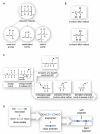Advancements in Soft-Tissue Prosthetics Part B: The Chemistry of Imitating Life
- PMID: 32391336
- PMCID: PMC7191111
- DOI: 10.3389/fbioe.2020.00147
Advancements in Soft-Tissue Prosthetics Part B: The Chemistry of Imitating Life
Abstract
Each year, congenital defects, trauma or cancer often results in considerable physical disfigurement for many people worldwide. This adversely impacts their psychological, social and economic outlook, leading to poor life experiences and negative health outcomes. In many cases of soft tissue disfigurement, highly personalized prostheses are available to restore both aesthetics and function. As discussed in part A of this review, key to the success of any soft tissue prosthetic is the fundamental properties of the materials. This determines the maximum attainable level of aesthetics, attachment mechanisms, fabrication complexity, cost, and robustness. Since the early-mid 20th century, polymers have completely replaced natural materials in prosthetics, with advances in both material properties and fabrication techniques leading to significantly improved capabilities. In part A, we discussed the history of polymers in prosthetics, their ideal properties, and the application of polymers in prostheses for the ear, nose, eye, breast and finger. We also reviewed the latest developments in advanced manufacturing and 3D printing, including different fabrication technologies and new and upcoming materials. In this review, Part B, we detail the chemistry of the most commonly used synthetic polymers in soft tissue prosthetics; silicone, acrylic resin, vinyl polymer, and polyurethane elastomer. For each polymer, we briefly discuss their history before detailing their chemistry and fabrication processes. We also discuss degradation of the polymer in the context of their application in prosthetics, including time and weathering, the impact of skin secretions, microbial growth and cleaning and disinfecting. Although advanced manufacturing promises new fabrication capabilities using exotic synthetic polymers with programmable material properties, silicones and acrylics remain the most commonly used materials in prosthetics today. As research in this field progresses, development of new variations and fabrication techniques based on these synthetic polymers will lead to even better and more robust soft tissue prosthetics, with improved life-like aesthetics and lower cost manufacturing.
Keywords: additive manufacturing; maxillofacial; polymer; prosthesis; prosthetic; silicone.
Copyright © 2020 Cruz, Ross, Powell and Woodruff.
Figures





Similar articles
-
Advancements in Soft-Tissue Prosthetics Part A: The Art of Imitating Life.Front Bioeng Biotechnol. 2020 Mar 31;8:121. doi: 10.3389/fbioe.2020.00121. eCollection 2020. Front Bioeng Biotechnol. 2020. PMID: 32300585 Free PMC article. Review.
-
Past, Present, and Future of Soft-Tissue Prosthetics: Advanced Polymers and Advanced Manufacturing.Adv Mater. 2020 Oct;32(42):e2001122. doi: 10.1002/adma.202001122. Epub 2020 Sep 9. Adv Mater. 2020. PMID: 32909302 Review.
-
Polymers in 3D printing of external maxillofacial prostheses and in their retention systems.Int J Pharm. 2024 May 25;657:124181. doi: 10.1016/j.ijpharm.2024.124181. Epub 2024 Apr 30. Int J Pharm. 2024. PMID: 38697583 Review.
-
An assessment of recent advances in external maxillofacial materials.J Prosthet Dent. 1980 Apr;43(4):426-32. doi: 10.1016/0022-3913(80)90215-2. J Prosthet Dent. 1980. PMID: 6928481
-
Assessment of body-powered 3D printed partial finger prostheses: a case study.3D Print Med. 2019 May 2;5(1):7. doi: 10.1186/s41205-019-0044-0. 3D Print Med. 2019. PMID: 31049828 Free PMC article.
Cited by
-
Comparative Evaluation of Hardness and Energy Absorption of Some Commercially Available Chairside Silicone-Based Soft Denture Liners and a Heat-Cured Soft Denture Liner.Clin Cosmet Investig Dent. 2023 Oct 4;15:205-213. doi: 10.2147/CCIDE.S433519. eCollection 2023. Clin Cosmet Investig Dent. 2023. PMID: 37814630 Free PMC article.
-
Enrichment of leukocytes in peripheral blood using 3D printed tubes.PLoS One. 2021 Jul 23;16(7):e0254615. doi: 10.1371/journal.pone.0254615. eCollection 2021. PLoS One. 2021. PMID: 34297742 Free PMC article.
-
Silicones for Maxillofacial Prostheses and Their Modifications in Service.Materials (Basel). 2024 Jul 4;17(13):3297. doi: 10.3390/ma17133297. Materials (Basel). 2024. PMID: 38998378 Free PMC article. Review.
-
Effect of Accelerated Aging on the Sorption and Solubility Percentages of Silicone Facial Prostheses.Eur J Dent. 2022 Feb;16(1):223-226. doi: 10.1055/s-0041-1731932. Epub 2021 Oct 21. Eur J Dent. 2022. PMID: 34674194 Free PMC article.
-
Color Modifications of a Maxillofacial Silicone Elastomer under the Effect of Cigarette Smoke.Materials (Basel). 2024 Aug 17;17(16):4089. doi: 10.3390/ma17164089. Materials (Basel). 2024. PMID: 39203267 Free PMC article.
References
-
- Abd El-Fattah M. Y., Rashad H. M., Kashef N. A., El Ebiary M. A. (2013). Evaluation of two different reinforcing materials used with silicone auricular prostheses. Tanta Dent. J. 10 31–38. 10.1016/j.tdj.2013.08.001 - DOI
-
- Affrossman S., Barbenel J. C., Forbes C. D., MacAllister J. M. R., Meng J., Pethrick R. A., et al. (1991). Surfasce structure and biocompatibility of polyurethanes. Clin. Mater. 8 25–31. 10.1016/0267-6605(91)90006-2 - DOI
Publication types
LinkOut - more resources
Full Text Sources
Research Materials

